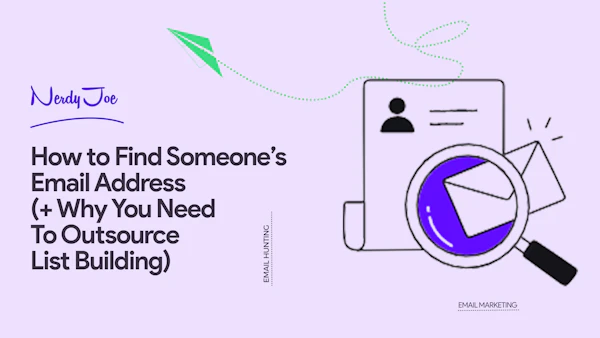Lead generation is a crucial part of any business's marketing strategy. It involves attracting and converting strangers and prospects into leads, and ultimately, customers. Without a steady stream of leads, businesses risk stagnation and a decrease in revenue.
According to a recent survey, a significant percentage of B2B marketers rank lead generation as their top marketing challenge. Generating leads can also be costly, with the average cost per lead varying by industry.
However, the payoff can be worth it, as converting leads into customers has the potential to drive significant growth for a business.
In this article, we'll highlight and discuss the main B2B lead generation statistics and strategies. We'll explore the average cost per lead, lead generation goals, conversion rates for different tactics, what marketing automation generates, and more.
We'll also highlight the top lead generation strategies most B2B businesses and most marketers use and provide tips for successful inbound and outbound lead generation.
Top 2 lead generation strategies
Let’s discuss the two main lead generation strategies sales teams and marketers use to generate new leads and see how they compare based on their average lead conversion and their average cost per lead.
Inbound marketing
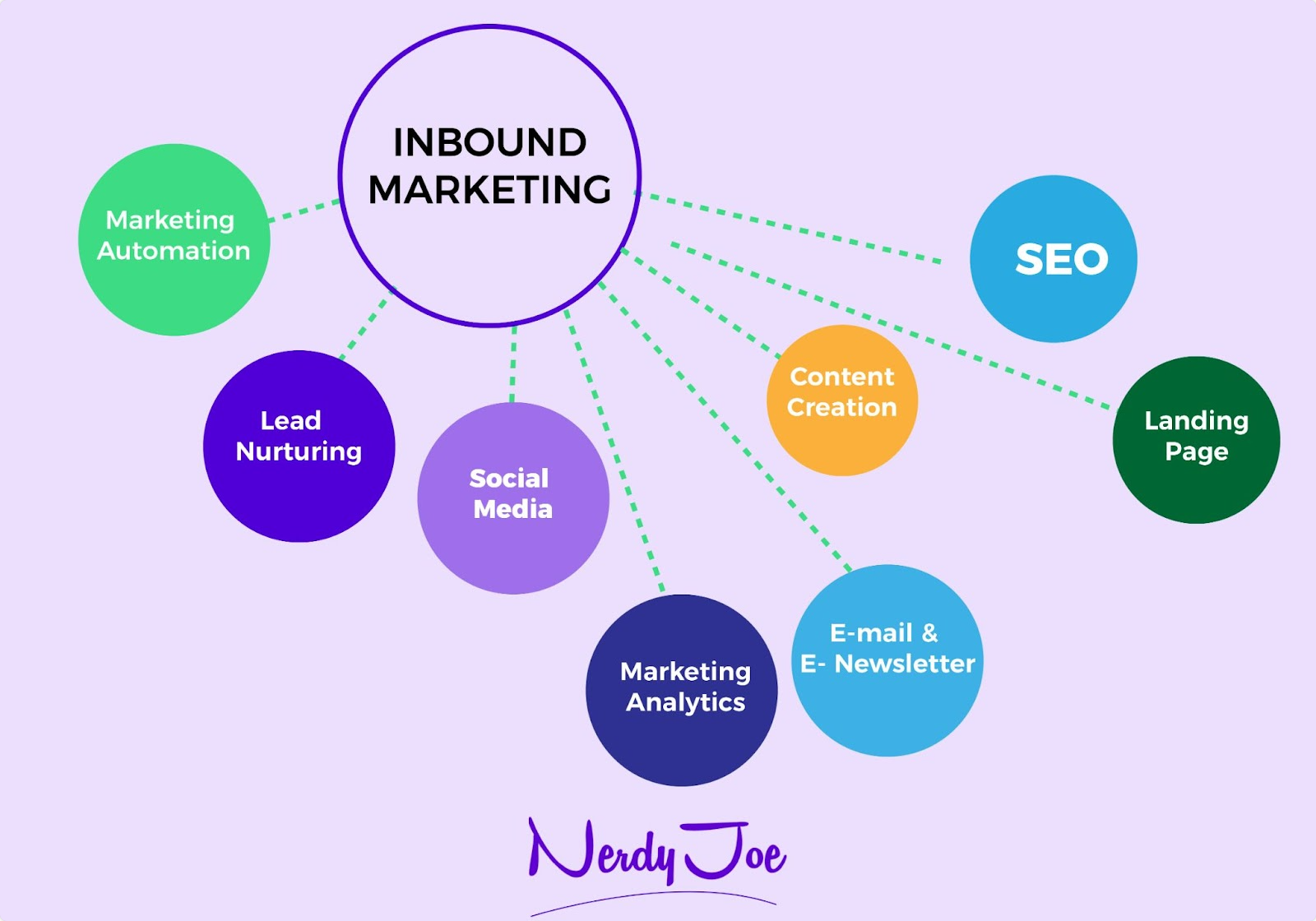
Inbound marketing involves generating leads and converting them through targeted, valuable content and experiences that are relevant to the customer.
This can be achieved through tactics such as email marketing, SEO, social media marketing, and content marketing. And according to HubSpot, businesses using primarily inbound marketing techniques spend an average of $135 per lead.
Outbound marketing
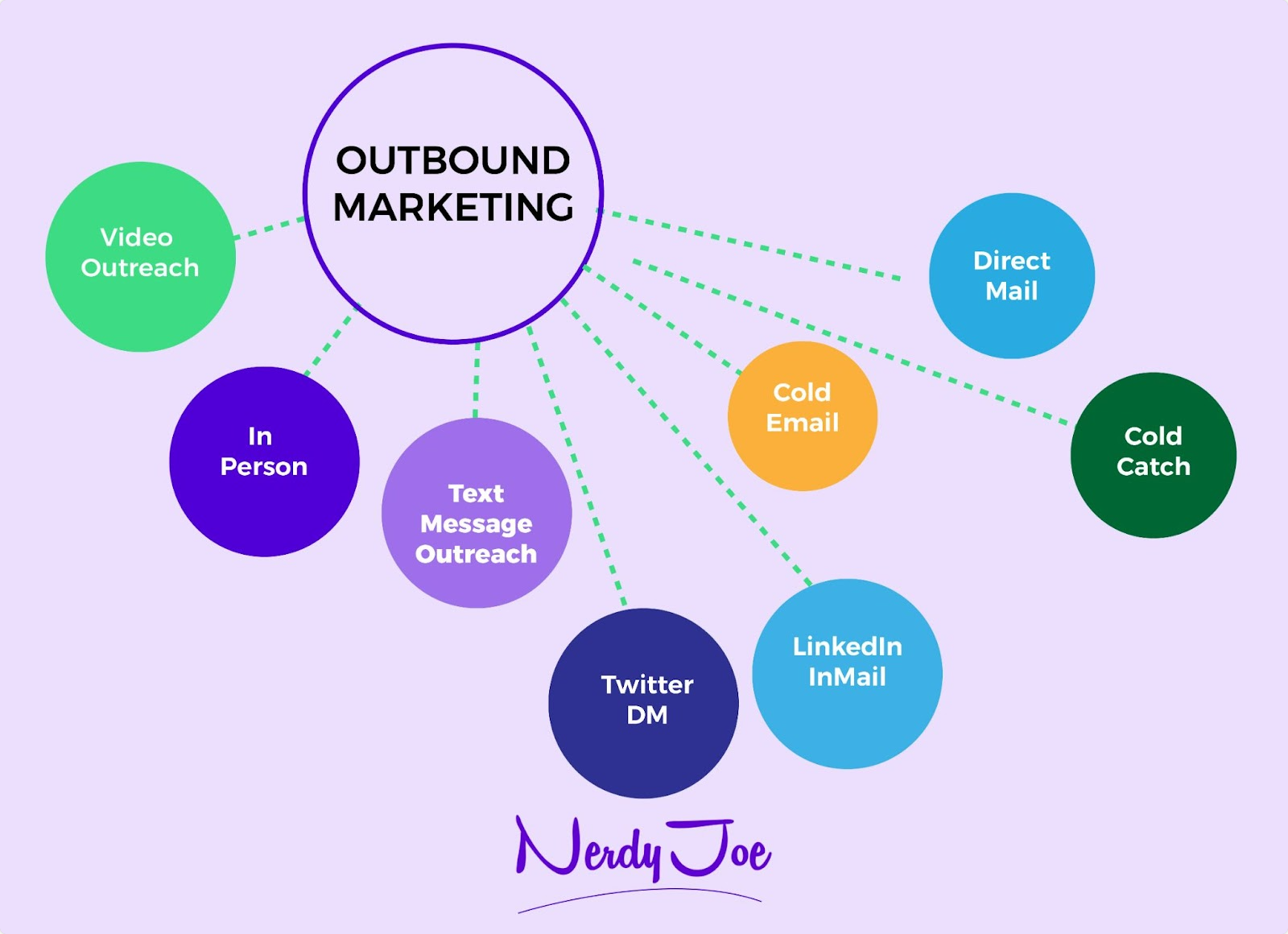
Outbound marketing is a type of marketing that involves generating qualified leads by actively reaching out to potential customers through channels such as advertising, cold calling, or cold mail.
It is an effective way to generate leads, but it can also be more expensive and time-consuming than other types of marketing, such as inbound marketing. Inbound marketing involves attracting potential customers to the business rather than actively reaching out to them.
Outbound marketing is particularly effective if you are trying to sell a product that doesn't have awareness (cold selling) or targeting specific demographics or customer segments. It is more demanding and time-consuming. But if you do it, it yields more meaningful results.
According to HubSpot, getting qualified leads through outbound costs 39% more than inbound leads. Also, they’ve found in their State of Marketing Report that less than one-fifth of marketers think outbound practices provide valuable leads.
The general lead generation statistics
The target industry and its unique factors determine the average cost per lead
The average cost per lead varies by industry. For example, data from a marketing research firm shows that the average cost per lead for the healthcare industry is $162, while the average cost per lead for the software industry is $208.
It's important for businesses to consider their industry and competitors when setting their lead generation budget.
Here is the cost per lead data by industry.
| Industry | Low | High | Average |
|---|---|---|---|
| Financial Services | $44 | $272 | $160 |
| IT, Computer, Software, and Technical Services | $39 | $370 | $208 |
| Education | $37 | $66 | $55 |
| Healthcare and Medical | $36 | $286 | $162 |
| Industrial and Manufacturing | $33 | $235 | $136 |
| Travel & Tourism | $29 | $182 | $106 |
| Retail | $25 | $41 | $34 |
| Consumer Products | $24 | $182 | $105 |
| Telecom | $24 | $64 | $45 |
| Marketing Agencies | $22 | $173 | $99 |
| Media and Publishing | $21 | $191 | $108 |
| Non-Profits | $16 | $43 | $31 |
| Business Services | $39 | $225 | $132 |
Source: linchpinseo.com
The conversion rates vary by industry
Your ability to convert leads will also depend on their industry and the business vertical in which they are. Ideally, it’s easier to get B2C leads to buy than it is to get B2B leads to buy.
This can be explained by the fact that B2B companies mostly include many decision-makers, require more thorough marketing strategies, and more. Also, bear in mind that conversion can mean many things, and it isn’t just about sales.
Here is the average conversion rate data per industry.
| Industry | Average Conversion Rate |
|---|---|
| Agency | 3.30% |
| Automotive | 2.00% |
| B2B Ecommerce | 3.20% |
| B2B Services | 3.50% |
| B2B Tech (SaaS) | 1.70% |
| B2C eCommerce | 2.00% |
| Cosmetics and Dental | 2.30% |
| Financial | 4.30% |
| Healthcare | 5.60% |
| Industrial | 5.60% |
| Legal | 2.60% |
| Professional Services | 9.30% |
| Real Estate | 1.70% |
| Travel | 4.70% |
Lead generation tactics have different conversion rates
Conversion rates for different lead generation tactics can also vary.
For instance, data from the marketing research firm, Barilliance, shows that email marketing has an average conversion rate of 15%, while Power of Digital Marketing (PDM) found that social media has an average conversion rate between 2-5%.
It's important for businesses to test and track the conversion rates of their lead generation efforts in order to determine which tactics are the most effective.
| Lead Gen Tactics | Average Conversion Rate |
|---|---|
| Organic | 16% |
| Amazon Advertising | 9.47% |
| Google Ads | 3.75% |
| Microsoft Advertising | 2.94% |
| Paid | 2.50% |
| Social media | 3.00% |
| Referral | 2.60% |
| Email Marketing | 15.22% |
| Direct | 2.00% |
| B2B content marketing | 1.1%-8% |
| Landing page | 9.70% |
| Event marketing | 3-5% |
| Video marketing | 4.80% |
| Chatbots | 10-30% |
| SEO | 2.40% |
| Pop-ups and overlays | 3.09% |
| LinkedIn lead gen | 13% |
Sources: barilliance, firstpagesage, sumo, chatdesk, linkedin, yansmedia, ruleranalytics, vwo, invespcro
The time it takes to convert a lead into a customer also varies by industry
The average time it takes to convert a lead into a customer can also vary by industry. On average, whatever marketing tactics or channel through which you acquired the lead, it takes weeks to convert leads into customers.
For example, the average time it takes to convert a lead in the software (SaaS) industry is 28 days. This is mainly because selling a software product requires long sales cycles, proper customer education, and creating some product experience before integration can happen.
The average conversion rate for leads to customers is 4% (MetricHQ)
As we mentioned earlier, lots of factors influence the lead to customer conversion benchmark. It can vary by industry, marketing strategies, channels, and even the device type.
That cleared; a good lead conversion rate, according to Klipfolio is around 2.4% globally for the average webpage. They’ve also found that a lead gen landing page can have a lead conversion rate of around 4%.
40% of marketers measure the success of their content marketing strategy by lead generation. (HubSpot)
It makes sense for marketers to measure the success of their content marketing strategy by lead generation because lead generation is the first win in marketing success.
When you measure the success of your content marketing strategy by lead generation, it allows you to determine whether your content is effectively attracting and engaging customers and contributing to the growth of your business.
Only 56% of B2B companies verify business leads before passing them to the sales team. (HubSpot)
Verifying leads is an important step in lead generation. It helps you ensure that the leads are high-quality and are more likely to convert into paying customers before passing them on to your sales team.
Failing to verify leads can result in your sales team wasting time and resources following up on leads that are not actually interested in making a purchase, which can be costly and detrimental to your company's bottom line.
And unfortunately, not all marketers do this. HubSpot’s State of Marketing Report found that only 56% of B2B companies verify business leads before passing it to the sales team.
Google gets 3.5 billion searches a day, making it prime real estate for any ad campaign, especially lead gen. (HubSpot)
According to HubSpot, Google gets 3.5 billion searches per day.
This simply makes Google the best and the most reliable platform for any sort of advertising, including lead generation campaigns.
Advertising on Google allows you to reach a large audience of potential customers who are actively searching for your products or services. This can be an effective way to generate leads and drive sales.
Marketers face a huge challenge connecting with prospects, as it takes an average of 18 calls. (Gartner)
According to data from a Garnter research on lead gen, it takes an average of 18 calls for a marketer to connect with prospects.
It’s just not easy in everyone’s ken to easily engage customers into meaningful conversations through phone calls, especially when you’re cold calling. And so, it can be time-consuming and require a lot of effort to connect with prospects and convince them to provide their contact information or make a purchase.
The most challenging aspect of lead generation is prospecting and lead qualification, according to 34% of salespeople. (Writer’s Block Live)
Both prospecting and lead qualification are crucial for successful lead generation. They help you identify and target the most promising leads and increase the chances of making a sale.
According to Writer’s Block Live, 34% of salespeople see them as the biggest lead generation challenges. That’s because it’s generally a time-consuming and hard process to find and reach potential customers, especially if you are targeting a specific niche or geographic area.
Also, determining if a potential customer is a good fit for your product or service requires carefully evaluating their needs, budget, potential objections, decision-making authority, and applying sales qualification frameworks to assess the likelihood of a purchase.
56% of leads aren’t ready to buy yet. Only 3% are. (Vorsight)
According to data retrieved from Vorsight, up to 56% percent of the people you are targeting with lead generation are not ready to buy yet, only 3% of them are, and the remaining percentage is poised to begin.
It simply means that the majority of leads you generate will not be ready to buy at the time you initially contacted them — and it comes as no surprise. It is a common challenge in lead generation, as it always takes time and multiple touchpoints to nurture a lead and convince them to make a purchase.
80% of marketers consider their lead generation efforts only to be slightly or somewhat effective. (Lead Generation Institute)
A large percentage of marketers do not feel that their lead generation efforts are very effective at generating leads or converting those leads into paying customers; that’s what the Lead Generation Institute found.
The problem we find with this is that most marketing messages or tactics don’t resonate with the target audience. Marketers target huge lists of customers, and they fail to create relevant, personalized messages that make sense.
A successful lead generation strategy requires research and personalization. No two customers are the same and shall not receive a copy of the same message.
Over half of marketers spend at least half of their budget on lead generation. (Bonsai)
According to Bonsai, 53% of marketers spend at least half of their budget on lead gen and B2B lead generation agencies.
It's important for businesses to invest in lead generation as it helps to increase brand awareness and ultimately drive sales.
Lead generation stats by marketing strategies
Here is what studies say about the different lead gen strategies, channels, and tactics that marketers use to target and acquire leads for their business.
Email marketing
The most effective lead generation channel for B2B marketers is email, according to 79% of B2B marketers. (Writer’s Block Live)
There are a variety of channels and tactics that B2B marketers use to generate leads, including email, social media, content marketing, events, and more.
But according to Writer’s Block Live report, email is particularly effective for this purpose, as a large majority of B2B marketers believe it to be the most effective lead generation channel.
This mainly has to do with the fact that email allows businesses to directly reach and engage with potential clients in a personalized and cost-effective way.
There is also the fact that you can automate your email campaigns — thereby saving time and ensuring that your leads are consistently being nurtured and followed up on.
Compared to other lead generation methods, email marketing drives 50% more sales leads. (WebFX)
Email allows businesses to engage in targeted and personalized messaging. According to WebFX, email marketing generates 50% more sales leads than the other lead gen methods.
Marketers get to send messages to potential clients based on factors such as their pain points, unique challenges, goals, and more. And it helps increase the relevance and effectiveness of the email, as it is more likely to be of interest to the recipient.
Content marketing
70% of people prefer to learn about a company through articles rather than ads (Demand Metric)
Demand Metric found that 70% of people prefer to learn about a company through articles rather than ads.
In general, people perceive articles to be more trustworthy than ads — given that they are typically based on facts and provide in-depth information about a product. Also, articles often provide valuable and interesting information that readers can relate to and learn from.
91% of B2B marketers use content marketing to generate leads. (Writer’s Block Live)
Blogging (aka content marketing) generates 67% more leads than traditional marketing methods, it only makes sense that the majority of marketers focus their efforts and resources there to generate leads.
According to lead gen data from Writer’s Block Live, 91% of B2B marketers use content marketing to generate leads.
When marketers target leads based on their position in the sales funnel, they have 73% higher conversion rates. (SmallBizGenius)
This boils down to strong personalization and increased efficiency in your lead nurturing.
Because by targeting your leads based on their position in the sales funnel, it lets you send more relevant and personalized messages, which can increase conversion.
Also, it allows you to focus your marketing efforts on leads that are more likely to convert, rather than wasting time and resources on leads that are not yet ready to buy.
Social media marketing
Social media generates almost double the marketing leads of trade shows, telemarketing, direct mail, or PPC (HubSpot)
According to HubSpot’s State of Marketing Report, social media is the best lead generation tool, generating almost double the marketing leads of other methods such as trade shows, telemarketing, direct mail, or PPC.
That’s because social media marketing offers targeted advertising options that allow you to reach specific demographics and interests. These options allow you to create and increase the relevance and effectiveness of your social media ads.
60% of B2B marketers think social media is the second most effective lead generation strategy. (Writer’s Block Live)
According to data from Writer’s Block Live, 60% of B2B marketers see social media is the second most effective lead generation strategy.
Social media opens your brand to the largest market you can have. It also gives your brand the ability to connect with potential leads in real-time and you can easily generate awareness for your business or products and build relationships with the audience directly.
66% of marketers generate leads from social media by spending only six hours per week on social media marketing. (Bonsai)
According to lead generation data from Bonsai, 66% of marketers are able to generate leads from social media by spending only six hours per week on it.
This indicates that social media facilitates both prospecting and lead generation. Better yet, it also indicates that it is a low-effort and cost-effective way to generate leads compared to other methods.
LinkedIn lead generation statistics
LinkedIn is the most effective B2B social media channel for generating qualified leads. (Bonsai)
According to Bonsai, LinkedIn is the most effective B2B social media channel for lead generation.
One reason for this is that LinkedIn is a professional networking platform, and many users are actively looking for new business opportunities or partners.
LinkedIn Inmail allows businesses to create company pages, publish content, and use paid advertising to reach potential leads. These features make it easier for you to connect with and nurture leads on the platform.
47% of marketers use LinkedIn to generate leads, and 45% of them gained customers through the platform. (Bonsai)
Bonsai also found that almost half of the marketers who use LinkedIn for lead generation are able to get leads and 45% of them get customers directly through the platform. Building on what we discussed earlier, these only go further showing the effectiveness of LinkedIn outreach.
Paid advertising lead generation statistics
Paid search advertising has an ROI of 200% (Truelist)
According to PPC statistics from Truelist, paid search advertising can generate a return on investment (ROI) of 200%. This is a very attractive ROI for businesses, especially when compared to other marketing channels.
Paid search advertising is that effective for lead generation because it allows you to target specific keywords and phrases that potential customers are using to search for products or services online.
Referral marketing
Referral marketing generates 3 times as many leads as traditional outbound marketing (HubSpot)
According to HubSpot, referral marketing generates three times as many leads as traditional outbound marketing methods.
This may make sense for lead generation because referral marketing relies on recommendations and personal connections, which can be more effective at attracting potential customers than more generic forms of outbound marketing like cold calling or cold email.
Event marketing
Events and webinars generate a median of 18% of total leads for B2B companies (Bonsai)
Events and webinars can be effective for lead generation because they provide an opportunity for businesses to connect with potential customers in a more personal and interactive way.
Attending an event or webinar allows potential customers to learn more about a company and its products or services and ask questions and get answers in real time.
73% of B2B marketers believe that webinars are the best strategy for generating high-quality leads. (Writer’s Block Live)
This makes sense as it joins the point we made earlier for events and webinars. Businesses can target a large audience and be more personal and interactive in their approach. They can build authority and credibility and gain the trust of their attendees. They can also collect their information.
Landing pages
Landing pages with forms that ask for less information have higher conversion rates (Cobloom)
The idea is simple.
Seeing a form full of space holders for a lot of information to fill in will not be encouraging for your potential leads. Also, the more information you ask, the more friction you create, and can considerably reduce your chances of getting the lead.
Using video on a landing page can increase conversion rates by 86% (EyeView)
Videos explain things better; both people and search engines prioritize them, and they let people learn and discover products in a way that is fun and interesting.
So, adding a video to your landing page helps increase conversions because it allows you to more effectively communicate the value of your product or service and engage visitors.
68% of B2B companies use strategic landing pages to generate leads. (Writer’s Block Live)
Such landing pages are super-focused on a single goal and help you present your information (about your products or services) in a clear and concise way and direct potential customers to take a specific action.
Calls-to-Action (CTAs)
Personalized CTAs convert a whopping 202% better than basic calls-to-action. (HubSpot)
According to HubSpot, personalized calls-to-action (CTAs) are significantly more effective at converting visitors into leads or customers than basic CTAs.
In other words, tailoring it to a specific audience's needs or interests is more effective at encouraging them to take a specific action.
Lead nurturing
Companies that excel at lead nurturing generate 50% more sales-ready leads at a 33% lower cost (Forrester)
Companies that excel at lead nurturing are able to generate more sales-ready leads because they are able to effectively engage and build relationships with their potential customers through their nurturing sequences (no matter what communication and channels they use).
Nurtured leads make 47% larger purchases than non-nurtured leads (WBL)
This comes as no surprise. Nurtured leads make larger purchases because they have a deeper understanding of the product or service being offered and have had the opportunity to build a relationship with the company.
Also, they are more likely to trust you and feel more confident in their decision to make a purchase.
59% of marketers say that content marketing is the most challenging lead nurturing strategy. (WBL)
In most cases, lead nurturing (doing it the right way) is easier said than done. It requires a significant investment of time and resources to create high-quality content and to effectively promote it to the right audience. Also, you will need to have a deep understanding of your target audience and their needs.
63% of leads who inquire about your business won’t convert for at least 3 months. (Marketing Donut)
Marketing Donut found that 63% of leads who inquire about your business won’t convert for at least 3 months. This can be because the potential customer is still in the early stage of the buyer's journey and not yet ready to make a purchase, or because they are still in the process of researching their options.
Marketing automation
By using marketing automation, businesses experience a 451% increase in qualified leads. (SmallBizGenius)
Marketing automation can help you generate high quality leads by allowing you to more effectively target and personalize their marketing efforts and to do it all at scale. Also, you can automate repetitive tasks such as sending emails or posting on social media.
You can also use a marketing automation software to track the effectiveness of your marketing campaigns and identify areas for improvement.
80% of marketing automation users saw leads increase. (Blogging Wizard)
According to Blogging Wizard, 80% of marketers who use automation see an increase in the number of leads they get. This aligns with the upper statistics as it allows marketers to scale their activities and more results. That’s why Bonsai also found that 77% of marketers convert more leads using automation software than those who don’t.
Video marketing
Video in email leads to a 200-300% increase in click-through rate (Digital Information World)
Video will always intrigue your leads. Adding video to your email makes the email more engaging and attention-grabbing. It allows you to communicate your message more effectively and be more compelling than with text.
70% of B2B marketers think video content helps leads convert. (Bonsai)
According to Bonsai, a whopping 70% of marketers think video helps them easily attract and convert leads. Video content gets more reach than any other form of content. Also, studies show that most people would rather watch a video than read a text about a specific topic.
Video content is more compelling and leaves your audience more interested and engaged. You can easily tell stories, and they can see the actual people behind your brand. This adds an extra layer of trust and credibility to your content that’s hard to beat.
Chatbots
Chatbots have a 50-80% success rate for lead generation (AnyLeads)
According to Anyleads, chatbots have a success rate of 50-80% for lead generation.
Chatbots can be an effective lead generation tool because they allow businesses to engage with potential customers in real time and provide them with information about products or services.
They can have meaningful conversations with your visitors (even when you’re away) and can gather information about leads, such as their contact information and areas of interest.
Customer reviews and testimonials
88% of consumers trust online reviews as much as personal recommendations (InvespCro)
Online reviews provide an opportunity for people to read about the experiences of others who have used a product or service. And since most people are skeptical about new experiences, it helps them make informed decisions.
Testimonials are the most effective form of content for converting visitors into leads (Exploding Topics)
According to Exploding Topics, that’s the most effective form of content for converting visitors into leads.
Testimonials can be an effective form of content for converting visitors into leads because they provide social proof. They can also be more persuasive than other types of content because they are written by real people who have used the product or service and can provide first-hand accounts of its benefits.
Search Engine Optimization (SEO)
SEO leads have a 14.6% close rate, while outbound leads have a 1.7% close rate (The Search Engine Journal)
According to the SEJ, SEO leads significantly have a better close rate (the percentage of leads that eventually convert into customers), 14%, than outbound leads, 1.7%.
This may be because SEO leads are often more qualified and have a higher level of interest in the product or service being offered. When a person searches for a product or service online, they are actively looking for information and may be more likely to make a purchase.
In contrast, outbound leads are often generated through cold strategies, such as cold calling or cold email, and the potential customer wasn't planning for it. As a result, outbound leads may be less likely to convert into customers.
Lead magnets, Pop-ups, and overlays
Pop-ups and overlays can increase email signups by up to 1,375% (AWeber)
Pop-ups and overlays are types of interactive content. They offer you an effective way to increase your email signups as they present visitors with a clear and prominent call-to-action (CTA) and gather valuable information, such as their contact information and areas of interest.
Gated content can increase lead generation by up to 300% (IronPaper)
You can increase your lead generation by up to 300% by using gated content, according to Iron Paper. Gated content means content behind a form or other barrier that requires the visitor to enter their contact information or complete some action in order to access it.
Offering a lead magnet can increase conversions by up to 785% (Backlinko)
Lead magnets work in almost the same way as gated content, visitors must give out information or perform an action to access the content, except this time it’s not gated, it’s sold to the visitors (as incentive) and they will know what to expect.
Follow up
41% of companies struggle to quickly follow up with leads (Verse)
Following up with leads in a timely manner is essential as it allows you to engage with potential customers while they are still interested and to try to convert them into customers. Unfortunately, 41% of companies struggle with it, and 44% of sales reps are too busy to do it, according to Verse.
Key takeaways
Lead generation is a crucial part of any business's marketing strategy, as it involves attracting and converting strangers and prospects into leads and, ultimately, customers.
You can use the data and stats in this post to continuously improve your lead generation efforts.
Be sure to always track the success of your lead generation efforts; you can identify what's working and what's not and make necessary adjustments.

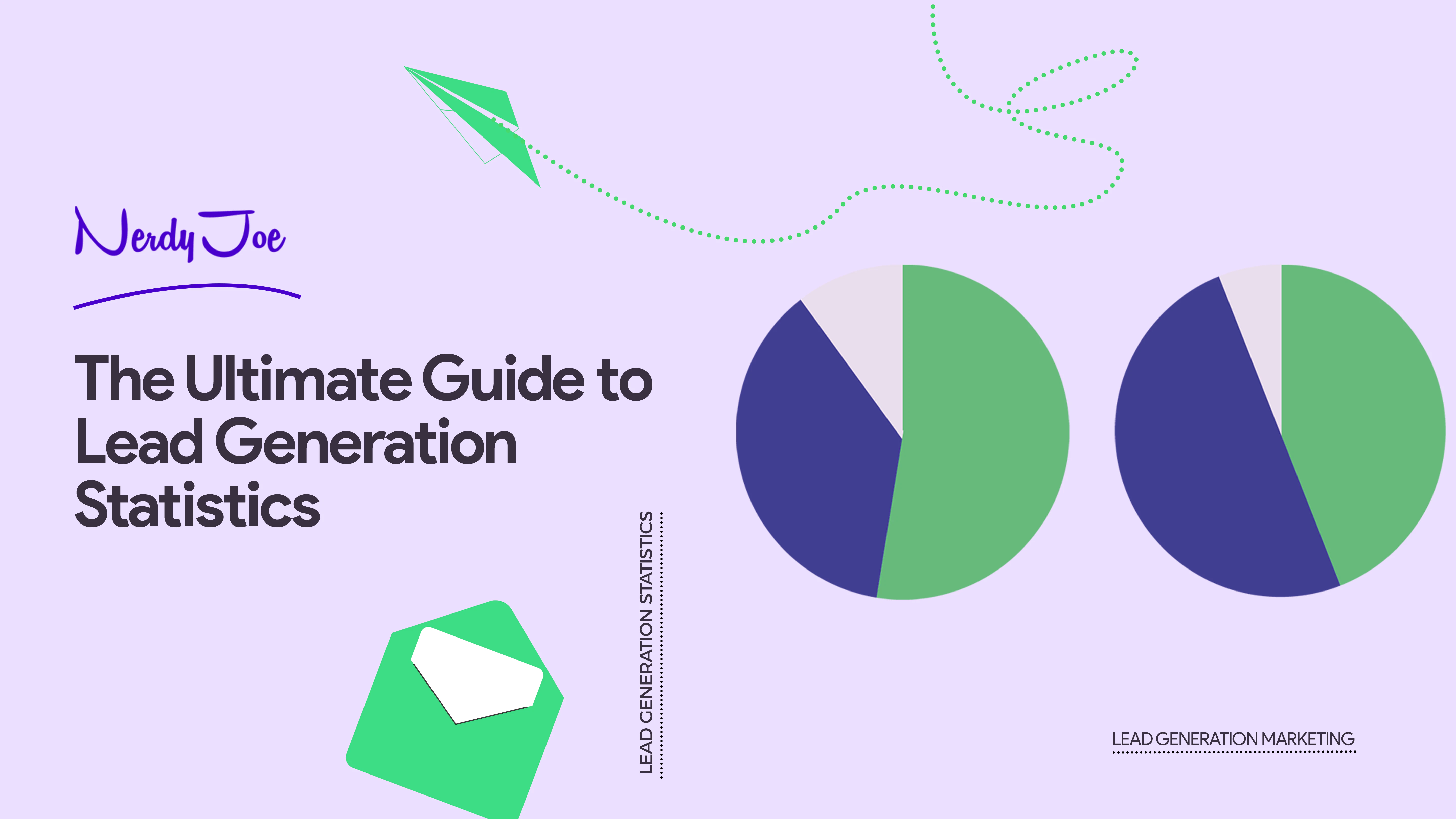
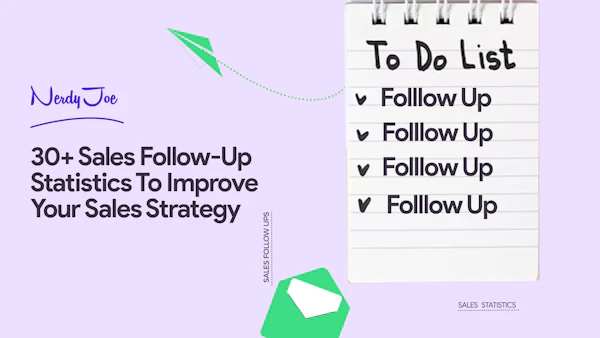
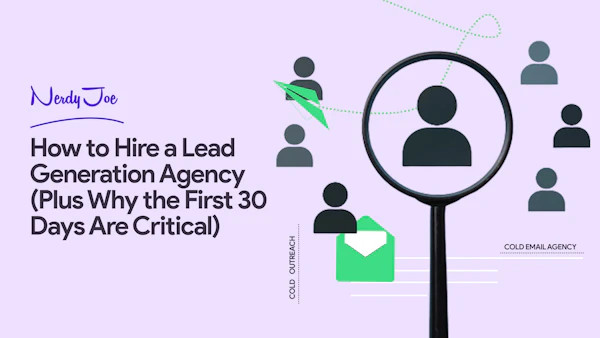
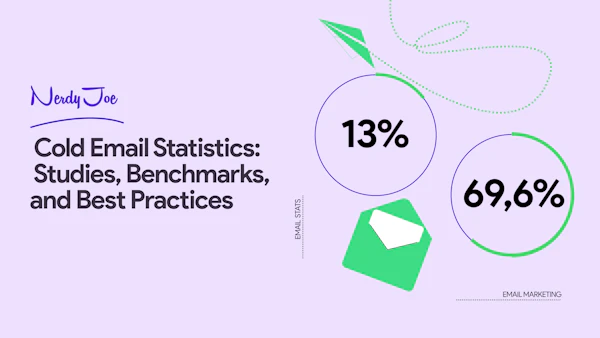
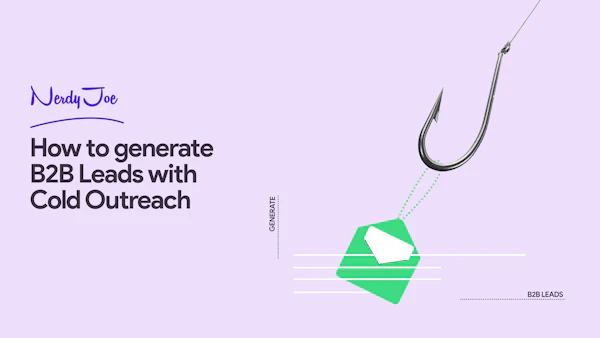
![top b2b lead generation companies and services in 2023 [in-depth review]](https://www.datocms-assets.com/66765/1674066909-top-b2b-lead-generation-companies-and-services-in-2023-in-depth-review-3x.jpg?w=600&h=400&fm=webp)
